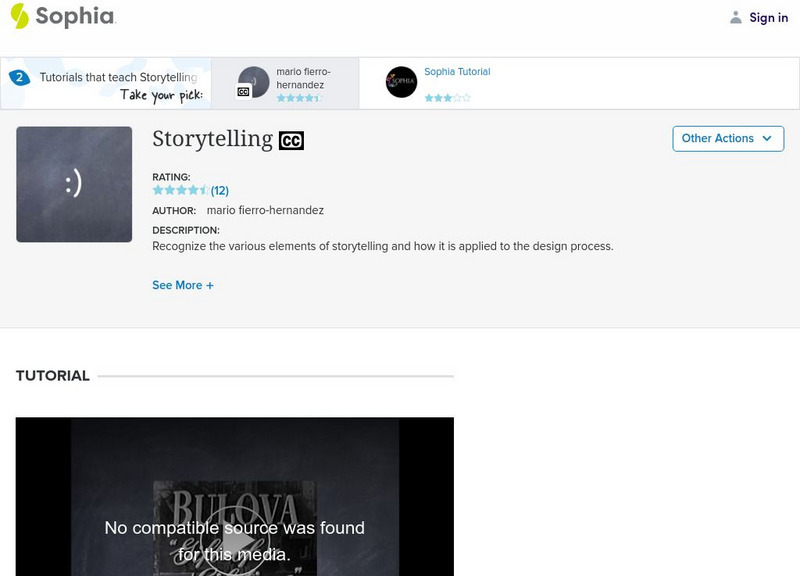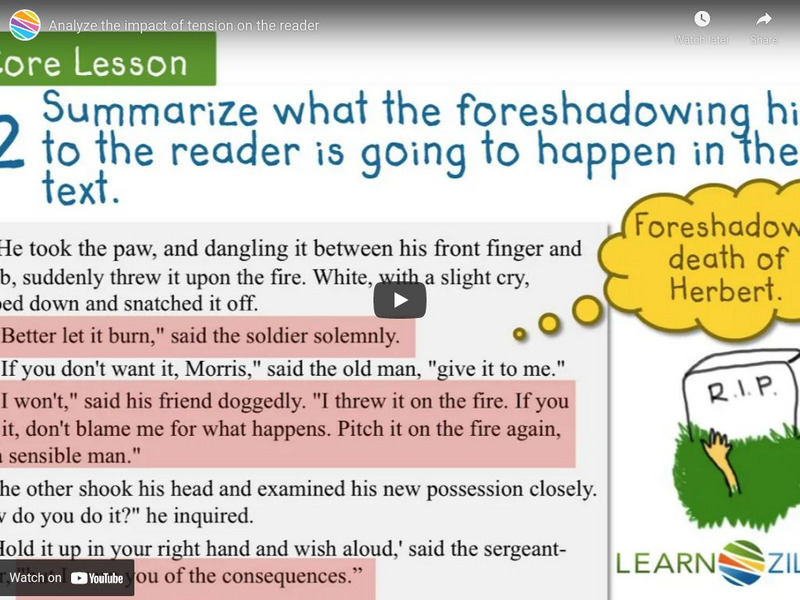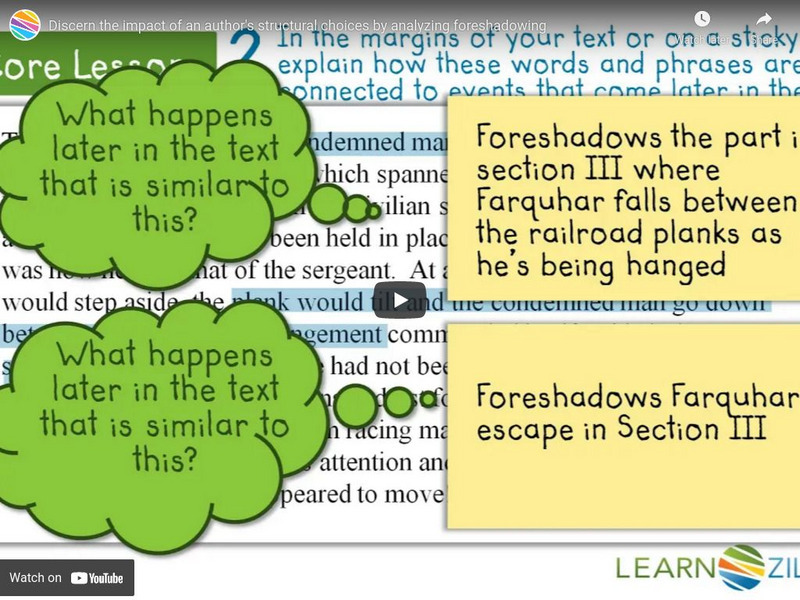Hi, what do you want to do?
Flocabulary
The Importance of Setting in a Story
Where does it happen? When did it happen? These are two questions that play a key role in understanding the setting of a story. The fourth and final video in a Language Arts playlist uses a song to explain how the setting connects to...
TED-Ed
Why Should You Read "Macbeth"?
All is fair in motivating readers. And something wickedly wonderful comes from using a short introductory video to double readers' enjoyment of Shakespeare's tragedy about the ambitious Thane of Glamis. It is a tale told by a genius.
The School of Life
Jane Austen
Jane Austen wrote about strong women, social boundaries, and relationship dynamics in the early 19th century to educate her readers about the state of humanity. Learn more about the themes woven throughout her works,...
TED-Ed
What Makes a Poem … a Poem?
What makes a poem a poem? The narrator of a short video wades into the debate with the contention that the three characteristics that poems share are musical qualities, condensed language, and intense feelings.
Sophia Learning
Sophia: How to Read a Writing Assignment
This video lesson focuses on how to read and understand a writing assignment. It begins by defining keywords used in assignments: analyze, compare and contrast, evaluate, describe, and propose. Then using a sample assignment, it...
Sophia Learning
Sophia: Identifying Genre
This video lesson focuses on identifying genre. It explains how looking at the following basic characteristics can help to determine gene: setting, stock characters, basic events, symbolism, length of work, and development of characters....
Sophia Learning
Sophia: Storytelling: Lesson 1
In this lesson, you will learn about storytelling and how it is applied to the design process. It is 1 of 3 in the series titled "Storytelling."
Sophia Learning
Sophia: Plot
This lesson introduces the concept of plots (how the material is organized and presented to the reader so that the text will have a specific effect on him or her) in fiction. It explains the plot diagram and provides examples. RL.9-10.5...
Sophia Learning
Sophia: Analyze the Impact of the Point of View
Notes describing a three-step process to analyze the impact of the point of view on a literary text. Notes can be both read and listened to.
Imagine Learning Classroom
Learn Zillion: Determine an Author's Message by Analyzing Character Development
In this video, you will learn how to determine an author's message by analyzing character development. [5:56]
Imagine Learning Classroom
Learn Zillion: Lesson Video for 'Analyze the Impact of Tension on the Reader'
In this lesson, you will learn how tension impacts the reader by analyzing the author's use of foreshadowing. [5:54]
Imagine Learning Classroom
Learn Zillion: Plan a Narrative by Constructing an Outline
In this lesson, you will learn how to plan your narrative by constructing an outline. Login gives access to a slideshow as well. [7:19]
Imagine Learning Classroom
Learn Zillion: Discern Impact of Author Structural Choices: Analyze Foreshadowing
In this video, you will learn how to discern the impact of an author's structural choices by analyzing examples of foreshadowing in a text. [8:02]
Imagine Learning Classroom
Learn Zillion: Determine an Author's Message by Analyzing Character Development
In this video, you will learn how to determine an author's message by analyzing character development. RL.11-12.3 Auth choice story elem [5:56]
EngageNY
Engage Ny: Determine Author's Purpose and Analyze Use of Rhetoric
Students participate in a Socratic seminar and demonstrate how to determine an author's point of view or purpose in a text and analyze how an author uses rhetoric to advance that point of view or purpose.
PBS
Pbs Learning Media: Literary Elements and Techniques: Theme
Learn how to identify theme in a literary work in this short animated video [2:26] from WNET.
PBS
Pbs Learning Media: Literary Elements and Techniques: Setting
Explore how authors use setting to establish the time, place, and social conditions in which a story takes place in this short animated video [2:38] from WNET.
PBS
Pbs Learning Media: Literary Elements and Techniques: Conflict
Learn how to identify different types of conflict in literature in this animated video [2:46] from WNET.
PBS
Pbs: Retelling a Story: Strategies for Students With Cognitive Disabilities
Video, effective for engaging students with significant cognitive disabilities, demonstrates an activity for retelling a story.
PBS
Pbs: Opportunities to Engage With the Word Wall
In this self-contained high school classroom, the teacher has students identify the beginning sound in a word, then selects a student to match the beginning sound of a word to the correct letter on the word wall.
PBS
Pbs: Planning for Communication/strategies for Students With Cognitive Disabilities
In this self-contained high school classroom, the teacher encourages the student to use the communication system as well as a vocal response while learning a new word.
PBS
Pbs: Conveying a Clear Message
In this self-contained high school classroom, a teacher supports her student in being persistent in her communication attempt. They use both the student's verbal abilities and her augmentative communication system to try and convey a...
PBS
Pbs: Indicating Letters With an Eye Gaze System
The video demonstrates effective strategies for engaging students with significant cognitive disabilities in literacy instruction, in particular the eye gaze system.
Sophia Learning
Sophia: Narratives
This tutorial uses text and audio to introduce narrative writing. [2:03]





















